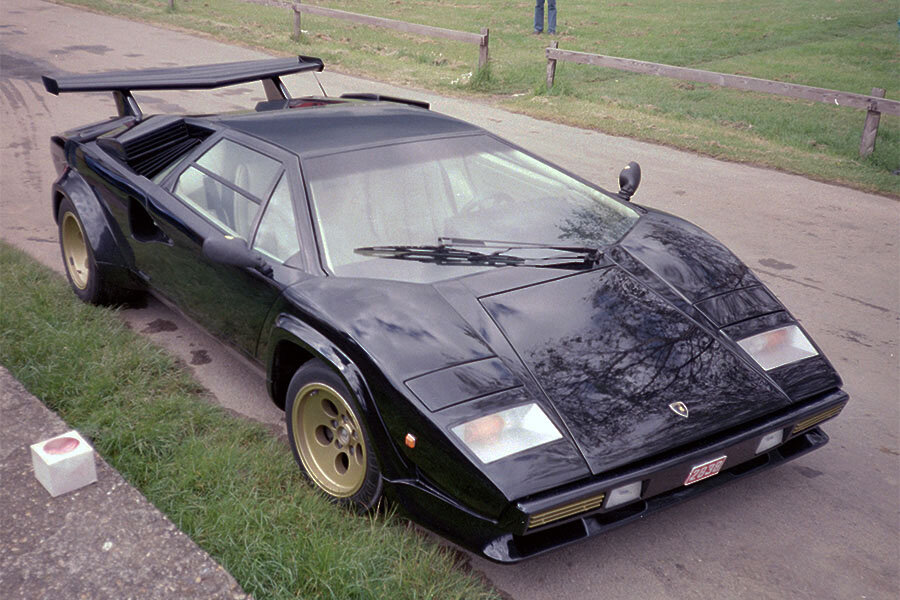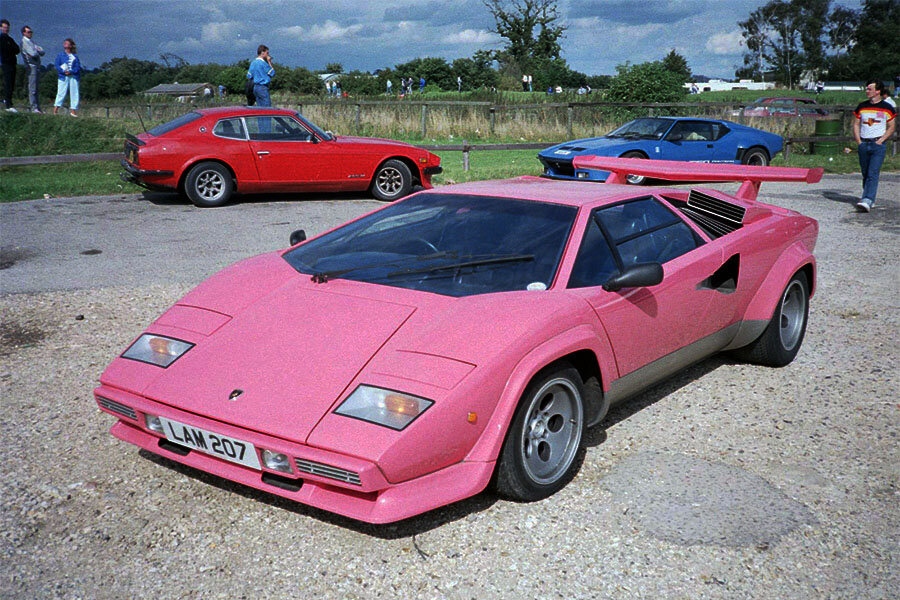Guide: Just Add Torque - a Historical & Technical Appraisal of the Lamborghini Countach 5000 S
/BACKGROUND
After years of mismanagement and a period of time spent in administration, Automobili Lamborghini’s fortunes rapidly began to improve when the Mimran brothers took control in July 1980.
As well as sanctioning the development of a V8-engined junior model and a peerless Cheetah-derived ATV, the Mimrams commissioned a nigh on five-litre V12 for the Countach.
The original Countach prototype of 1971 had of course featured such an engine, however, any hope of production variants using the highly anticipated cinque litri was quickly abandoned.
The experimental Tipo L500 unit was over 1000cc bigger than any previous Lamborghini engine and contained a large quantity of magnesium parts. Unfortunately, the L500 had persistent problems with reliability and longevity. In late 1971, cash-strapped Lamborghini temporarily had to shelve any further development.
Work re-commenced on a proper five-litre production engine as soon as the Mimrams completed their $3m purchase of Automobili Lamborghini.
Despite having been around in one shape or another for the best part of ten years, the Countach was still the most exciting supercar on the market. Its wedge profile, scissor doors and aggressive S-type body kit meant it was unrivalled in terms of visual drama.
The Porsche 930, Ferrari BB and Aston Martin V8 Vantage may have been just as effective in terms of real world performance, but for those customers that wanted the ultimate supercar of its day, there was nothing to rival a Countach.
The new Countach 5000 S was unveiled at the Geneva Motor Show in March 1982. Production got underway immediately.
ENGINE / TRANSMISSION
At its heart was a reinforced engine that had been taken out from four to 4.75-litres. Bore was increased from 82mm to 85.5mm and stroke was extended from 62mm to 69mm. This gave an overall capacity of 4754cc which represented a gain of 825cc over the outgoing LP400 S.
Thanks to the extra cubic inches on offer, Lamborghini was able to reduce the compression ratio from 10.5:1 to 9.2:1 and not lose any power.
In its new 4.75-litre configuration, the Countach engine developed 375bhp at 7000rpm. Importantly, peak power now came on stream at 1000rpm less than before. There was also considerably more torque on offer: 302lb-ft at 4500rpm compared to 269lb-ft at 5000rpm.
Electronic ignition was another new feature.
Otherwise, the all-alloy 60° V12 was much the same. It featured chain-driven dual overhead camshafts, wet-sump lubrication and six sidedraught Weber 45 DCOE carburettors.
Although Ferrari launched a V8 engine with four-valve heads at Geneva in 1982, Lamborghini stuck with a two-valve arrangement until 1985.
Once again, transmission was via a five-speed manual gearbox, dry-single plate clutch and limited-slip differential.
CHASSIS
Aside from the new 4.75-litre engine, under the skin, little was changed.
This latest iteration of the Countach retained the complex round tubed spaceframe fabricated by Marchesi & C. in Modena.
The floorpan was a mixture of fibreglass and steel. Fuel tanks with a combined capacity of 120-litres were located in each sill.
Suspension was as per the original four-litre Countach S which had been re-engineered to accommodate Pirelli’s ultra low profile P7 tyres and dramatically widened wheels.
Fully independent all round, it comprised double wishbones at the front with upper lateral links, reversed lower wishbones and upper and lower trailing arms at the back. Coil springs and telescopic Koni dampers were installed at each corner (two per side at the rear). Anti-roll bars were fitted at either end.
Brake discs and calipers were supplied by ATE. The discs had a 300mm diameter at the front and 284mm diameter at the rear.
The Pirelli P7-shod 15-inch diameter wheels measured 7.5 and 9.5-inches wide front to back. The first 20 Countach 5000 S came with wheels manufactured by Campagnolo. Subsequent examples rode on visually identical rims by OZ Racing.
BODYWORK
Aside from tell-tale badges on the rear fascia, cosmetically the 5000 S was identical to the outgoing Series 3 LP400 S.
By this stage, the S-type revamp carried out by Marcello Gandini for Bertone was four years old. However, it was just so right that nothing was deemed worthy of alteration. Considering the fast-changing design environment of the early 1980s, this was quite some achievement.
Gandini’s 1978 update had essentially been to productionise the modifications made on the small batch of Countach LP400 Speciales. These early widebody cars had featured wheelarch extensions and spoilers that were quite crudely added to standard LP400 bodies. By contrast, Gandini’s integration of the new features was superbly executed.
Body-coloured wheelarch extensions were glued in position. The front arches swept down to an integral chin spoiler complete with brake and radiator cooling ducts. The front bumper had been redesigned to house a pair of fog lights and additional intakes with brushed metal grilles.
The wheelarch extensions, front bumper and front spoiler were all fabricated from fibreglass.
INTERIOR
Like the exterior, the 5000 S cockpit was practically identical to its predecessor.
Instrumentation was housed in a rectangular binnacle with a natural alloy fascia. Large read outs for road and engine speed were complemented by smaller dials for oil pressure, oil temperature, water temperature, battery amps and fuel. Two banks of warning lights were also located in the main binnacle.
The audio system was inboard of the glovebox. The air-conditioning controls were mounted underneath the stereo on a central panel that linked the dash and the bulky transmission tunnel.
The seats could be manually adjusted fore and aft, but the backs were fixed in position.
The split side windows could only be lowered a few inches and were manually operated.
Leather was used to upholster the seats, transmission tunnel, sills, dash and upper rear bulkhead.
As before, cockpit space was limited for anyone in excess of six feet tall.
OPTIONS
Optional extras included a sports exhaust, rear spoiler, gold instead of silver wheels and a choice of audio systems.
WEIGHT / PERFORMANCE
Compared to the outgoing LP400 S, weight rose from 1275kg to 1480kg. This was primarily as a result of the reinforced engine, but also dramatic build quality improvements.
Top speed went up to 182mph. 0-62mph took 5.2 seconds.
PRODUCTION
Production ran from March 1982 until March 1985, at which point the 5.2-litre Countach Quattrovalvole was introduced.
321 Countach 5000 S were built. A believed 37 were right-hand drive.
Text copyright: Supercar Nostalgia
Photo copyright: Supercar Nostalgia


































